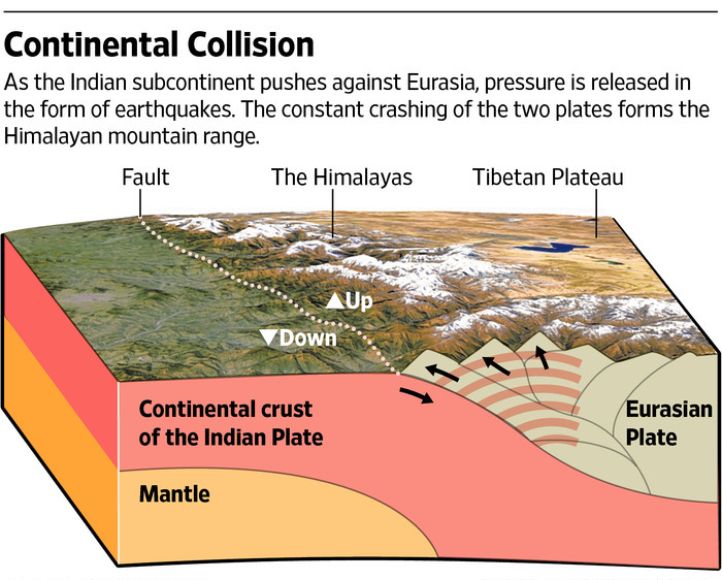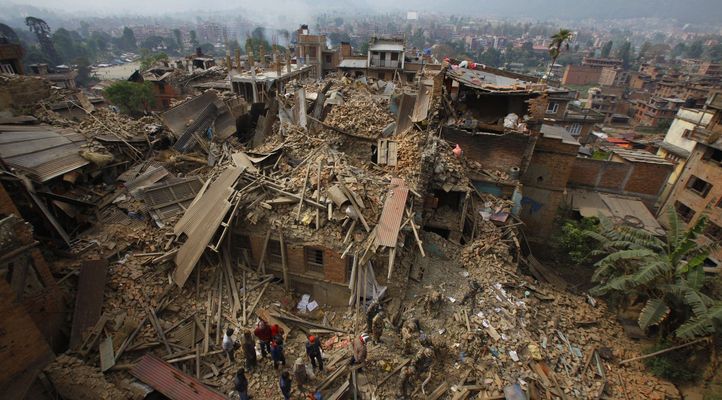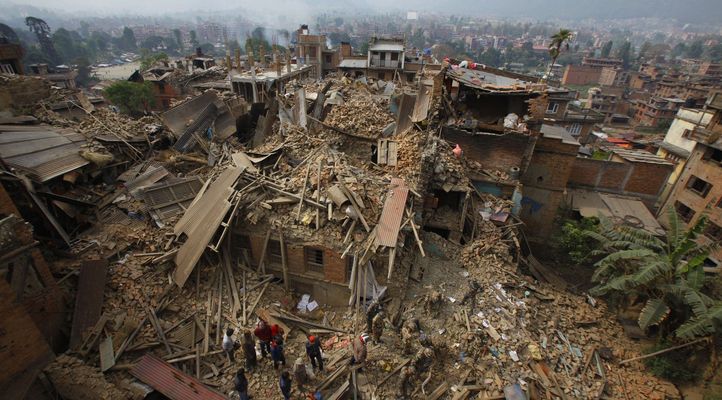What Are Exoplanets And How NASA Detects Life Beyond Our Solar System
Bharti Airtel Set To Acquire Telenor India Within This Year
Google Celebrates NASA’s Discovery Of Seven Earth-Like Planets With An Animated Doodle
Some Home Remedies That Might Sound Bizarre But Actually Work Like A Charm
Akshay Kumar Feels He Has Made Enough Money, Now Wants To Focus On Content & Characters
Delhi ATM Dispenses Fake Rs 2000 Notes From ‘Childrens Bank of India’ With ‘Churan Lable’
Adolf Hitler’s Personal Telephone During World War II Is Up For Auction In The US
From Salman Khan To Rekha, Neil Nitin Mukesh’s Wedding Reception Was Quite A Starry Affair
Nepal Experiences A 7.0+ Magnitude Earthquake Every 75 Years. Why Does This Happen?
On Saturday, April 25 a devastating earthquake hit Nepal. It has taken the lives of 3,726 people and injured 6,538 individuals, as of Monday 5pm, not to mention the irreversible damage done to the country's infrastructure. Hundreds of buildings have crumbled with the force of the quake. Durbar Square, a UNESCO world heritage site has been reduced to rubble. The famous Dharahara Tower has been toppled to leave just a stump. Nepal is used to quakes - it is one of the most seismically active regions in the world. You only have to look to the Himalayas for proof.
Nepal sits on a very precarious fault line - a fault is like a board, upon which a spring is stuck. It is a rough surface under the surface of the Earth. A fault line is the the point where the fault and ground surface meet.
The most visible result of this is the Himalayan mountain range. The fault line runs along the 1400 mile long mountain range. The constant collision of the India and Eurasia tectonic plates pushes up the height of the peaks by about a centimetre a year.

Every 75 years
The latest earthquake was the worst one Nepal has experienced in 81 years. According to the National Society for Earthquake Technology, this region experiences a magnitude 8 quake approximately every 75 years.
The reason for this is the regular movement of the fault line that runs along Nepal's southern border, where the India plate collided with the Eurasia plate 40 to 50 million years ago.
"The so-called India plate is pushing its way north toward Asia at a rate of about 5 centimetres, or 2 inches, a year" said Lung S Chan a geophysicist of the University of Hong Kong. Geologically speaking, that is extremely fast.
As the plates push against each other, friction generates stress and energy that builds until the earth ruptures. In the case of Saturday's quake the plate jumped about 2 meters forward.
The Saturday quake was also relatively shallow, it took place only about 10-15km below the Earth's surface. According to the US Geological Survey, such quakes tend to cause more damage and more aftershocks than those that occur deeper down.






